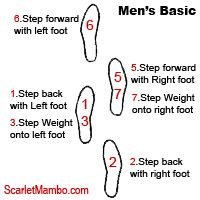I get a lot of advice on my terrible footwork when point-sparring. So I've been looking around online for resources to try to discover the meaning of some of the comments I get (not just here, but from my dojomates, etc). Comments like 'work the angles'. What does that mean, exactly? Circle more, be less linear. OK, I know what 'circular' means and what 'linear' means, but what does that mean in terms of what foot goes where? I guess I'm looking for something that looks like a dance chart, you know, put this foot here, that foot there, with arrows pointing the right direction, etc. I can move in a circular way, but is it a good way when sparring? I'm just making stuff up without any definite guidance. I do get help in my dojo, but we don't do a lot of point sparring, so I think some of the advice I'm getting has more to do with self-defense and/or continuous sparring. I'm also interested in matching my footwork to my body type; I get advice to jump in the air and change my lead, but frankly, I don't do much jumping; at my age and weight, it's more of a lurch if I try that. Probably better ways for a guy my size to do that without getting nailed with a kick in mid-lurch. I'm just looking for links to any simple descriptions with diagrams or photos. I'm afraid reading "Try working in a circular pattern" or "Work the angles" doesn't really tell me anything. Probably good advice if I knew how to do those things, you know? Just some basic instructions; put this foot here, shift that way, put that foot there. Stuff I can practice shadow boxing at home.
Thanks!
Thanks!

